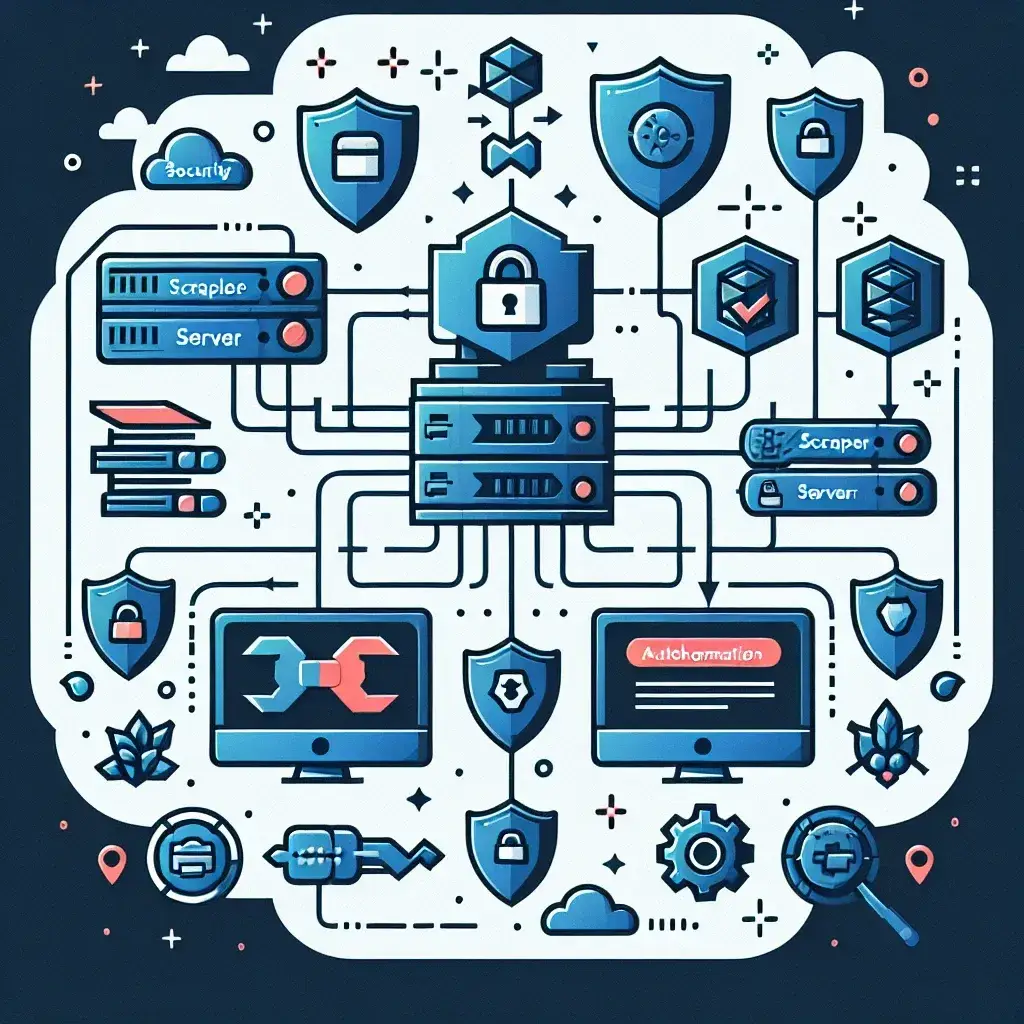Web scraping has evolved from simple data extraction to sophisticated operations requiring robust security measures. As scraping projects scale, implementing proper authentication and role-based access control becomes crucial for maintaining security, compliance, and operational efficiency. Supabase emerges as a powerful solution that combines the simplicity of Firebase with the robustness of PostgreSQL, making it an ideal choice for managing scraper authentication and roles.
Understanding the Authentication Challenge in Web Scraping
Modern web scraping operations face numerous authentication challenges that extend beyond simple login mechanisms. Organizations running multiple scrapers across different teams need granular control over who can access what data, when they can access it, and how they can interact with scraping infrastructure. Traditional authentication methods often fall short when dealing with the dynamic nature of scraping operations, where scrapers may need to operate autonomously while maintaining security protocols.
The complexity increases when considering factors such as rate limiting, data sensitivity levels, geographic restrictions, and compliance requirements. A scraper handling financial data requires different access controls than one collecting public social media posts. This is where Supabase’s comprehensive authentication and authorization system proves invaluable, offering developers the flexibility to implement sophisticated security measures without building everything from scratch.
Why Supabase Excels for Scraper Authentication
Supabase provides several advantages that make it particularly suitable for scraper authentication scenarios. Its real-time capabilities ensure that authentication status and role changes propagate immediately across all connected scrapers. The platform’s built-in Row Level Security (RLS) allows for fine-grained data access control, ensuring that scrapers only access data they’re authorized to handle.
The PostgreSQL foundation offers the reliability and performance necessary for high-volume scraping operations, while the REST and GraphQL APIs provide flexible integration options. Additionally, Supabase’s audit logging capabilities enable comprehensive tracking of scraper activities, which is essential for compliance and debugging purposes.
Core Authentication Features
Supabase’s authentication system supports multiple providers including email/password, OAuth providers, and magic links. For scraping applications, API key authentication often proves most practical, allowing scrapers to authenticate programmatically without user intervention. The platform also supports JWT tokens with customizable expiration times, enabling both short-lived session tokens for sensitive operations and longer-lived tokens for continuous scraping tasks.
Implementing Role-Based Access Control
Effective role management in scraping operations requires careful consideration of different user types and their respective permissions. A typical scraping organization might have roles such as administrators, data engineers, analysts, and automated scrapers, each requiring different levels of access to data and system functionality.
Designing Role Hierarchies
When implementing roles in Supabase for scraper authentication, consider creating a hierarchical structure that reflects your organization’s needs. Administrator roles might have full access to all scraped data and system configuration, while data engineer roles could focus on scraper management and data pipeline configuration. Analyst roles might have read-only access to specific datasets, and scraper service accounts could have highly restricted permissions limited to data insertion and basic health reporting.
Supabase’s custom claims feature allows you to embed role information directly into JWT tokens, enabling efficient authorization checks without additional database queries. This is particularly valuable for high-frequency scraping operations where minimizing latency is crucial.
Setting Up Authentication Infrastructure
The implementation process begins with configuring your Supabase project and establishing the authentication foundation. Start by enabling the authentication providers you’ll need and configuring JWT settings appropriate for your scraping use case. For automated scrapers, consider implementing service account authentication with long-lived tokens, while human users might benefit from shorter session durations with refresh token capabilities.
Database Schema Design
Design your database schema to support role-based access effectively. Create tables for user profiles, roles, permissions, and scraper configurations. Implement foreign key relationships that maintain data integrity while allowing for flexible role assignments. Consider creating views that simplify common queries while maintaining security through RLS policies.
A well-designed schema might include tables for scraper instances, data sources, collection schedules, and access logs. Each table should have appropriate RLS policies that enforce role-based access at the database level, providing an additional security layer beyond application-level checks.
Advanced Configuration Techniques
Sophisticated scraping operations often require advanced authentication configurations that go beyond basic role assignments. Implementing time-based access controls allows scrapers to operate only during approved windows, while geographic restrictions can ensure compliance with regional data protection regulations.
Dynamic Permission Management
Supabase’s real-time capabilities enable dynamic permission management, where role assignments and permissions can be updated instantly across all connected scrapers. This is particularly valuable for responding to security incidents or adjusting access levels based on changing business requirements.
Consider implementing conditional permissions based on factors such as data sensitivity, scraper performance metrics, or external approval workflows. For example, a scraper might gain access to premium data sources only after demonstrating consistent reliability and compliance with rate limiting policies.
Security Best Practices and Implementation
Security in scraper authentication extends beyond user verification to encompass data protection, access auditing, and threat detection. Implement comprehensive logging that captures authentication events, data access patterns, and system modifications. This audit trail proves invaluable for compliance reporting and security incident investigation.
Token Management Strategies
Develop robust token management strategies that balance security with operational efficiency. Implement token rotation policies that automatically refresh credentials before expiration, reducing the risk of service interruptions. Consider using different token types for different operations – short-lived tokens for sensitive data access and longer-lived tokens for routine maintenance tasks.
Supabase’s webhook functionality enables automated responses to authentication events, allowing you to implement custom security measures such as alerting administrators to unusual access patterns or automatically revoking compromised credentials.
Monitoring and Maintenance
Ongoing monitoring ensures that your authentication system continues to meet security and performance requirements as your scraping operations evolve. Implement dashboards that track key metrics such as authentication success rates, token usage patterns, and role assignment changes. Regular security audits help identify potential vulnerabilities and ensure compliance with evolving regulations.
Performance Optimization
Monitor authentication performance to ensure that security measures don’t become bottlenecks in your scraping operations. Optimize database queries used for authorization checks, implement appropriate caching strategies, and consider using Supabase’s edge functions for complex authentication logic that needs to execute close to your scrapers.
Integration with Existing Systems
Most organizations need to integrate Supabase authentication with existing identity management systems and scraping infrastructure. Plan integration strategies that maintain security while minimizing disruption to existing operations. Consider implementing gradual migration approaches that allow you to validate the new authentication system before fully committing to it.
Document integration points clearly and establish procedures for handling authentication failures and system maintenance. Your scraping operations should gracefully handle authentication service outages and automatically recover when services are restored.
Future-Proofing Your Authentication Strategy
As scraping regulations and technologies continue to evolve, your authentication strategy must remain adaptable. Design your Supabase implementation with flexibility in mind, using configuration-driven approaches that allow for easy updates to authentication policies and role definitions.
Stay informed about emerging authentication standards and privacy regulations that might affect your scraping operations. Regular reviews of your authentication architecture ensure that it continues to meet both current needs and anticipated future requirements, maintaining the security and compliance of your scraping infrastructure while supporting business growth and innovation.
By leveraging Supabase’s comprehensive authentication and authorization capabilities, organizations can build robust, scalable scraping operations that maintain security without sacrificing operational efficiency. The platform’s combination of developer-friendly APIs, enterprise-grade security features, and real-time capabilities makes it an excellent choice for modern scraping authentication challenges.


